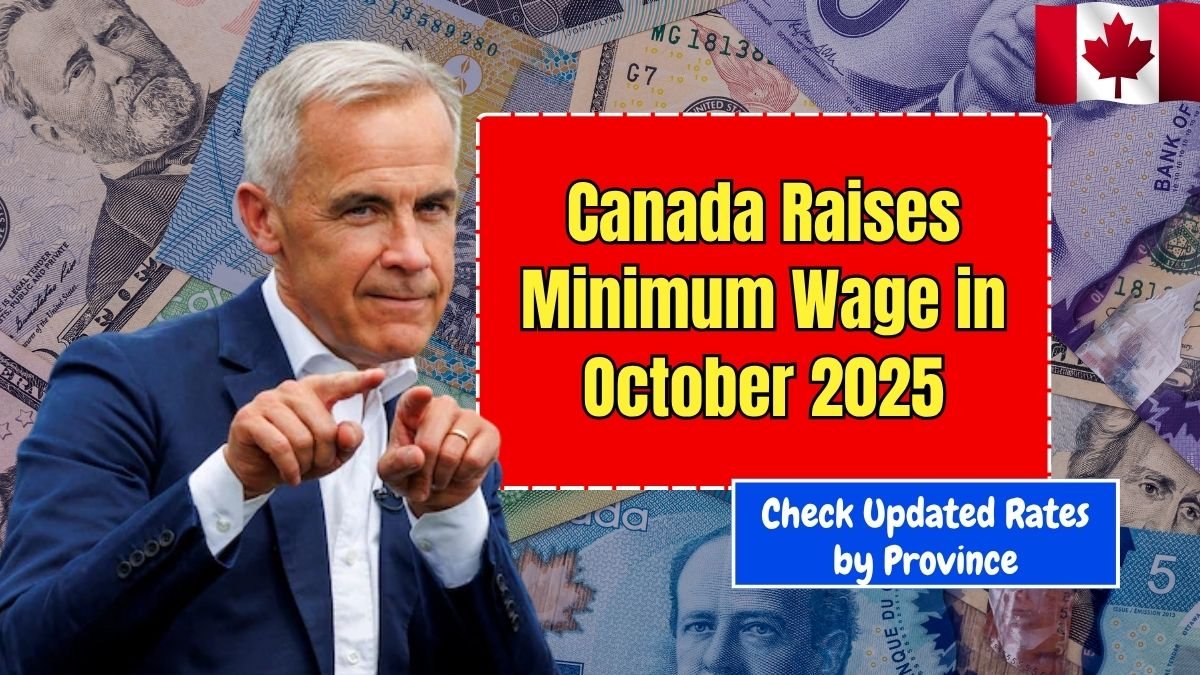As of October 1, 2025, Canada is seeing another wave of minimum wage increases across key provinces. These changes aim to address inflation, rising living costs, and income inequality.
In this article, we break down every updated rate, explain how these adjustments work, and what both workers and employers should know moving forward.
Why Canada Is Raising the Minimum Wage (Again)
- Canada has seen persistent inflation in essentials like housing, food, and energy, eroding real wages year after year.
- Many provinces now use indexation formulas tied to the Consumer Price Index (CPI) or combined wage/inflation models to automatically adjust minimum wages.
- The goal is to prevent full-time workers from falling behind on basic living expenses, while introducing predictability into wage policy.
Updated Minimum Wages (Effective October 1, 2025)
Below is a table summarizing the new minimum wage rates, the previous rates, and notes for special categories or upcoming changes:
| Province / Jurisdiction | New Minimum Wage (Oct 1, 2025) | Previous Rate | Notes / Special Cases / Upcoming Changes |
|---|---|---|---|
| Ontario | CA $17.60/hr | CA $17.20/hr | Student rate (under 18, ≤28 h/week) becomes CA $16.60/hr; homeworkers rate becomes CA $19.35/hr |
| Manitoba | CA $16.00/hr | CA $15.80/hr | Based on Manitoba’s inflation — raised by 20 cents |
| Nova Scotia | CA $16.50/hr | CA $15.70/hr | Second increase in 2025; responding to cost-of-living pressures |
| Prince Edward Island | CA $16.50/hr | CA $16.00/hr | Scheduled increase; next bump to CA $17.00/hr in April 2026 |
| Saskatchewan | CA $15.35/hr | CA $15.00/hr | Combines CPI growth and average wage methodology |
| British Columbia | CA $17.85/hr (effective June 1, 2025) | CA $17.40/hr | BC already raised mid‑year per indexation rules |
| Québec | CA $16.10/hr | — | Tipped‑worker (“gratuities”) rate remains at CA $12.90/hr |
| New Brunswick | CA $15.65/hr (from April 2025) | — | No October change; next adjustment tied to CPI in April |
| Newfoundland & Labrador | CA $16.00/hr | — | Adjusted April 2025; future increases tied to CPI |
| Northwest Territories | CA $16.95/hr (effective Sept 1, 2025) | — | Adjusts September each year based on Northwest CPI and average wages |
| Nunavut | CA $19.75/hr (effective Sept 1, 2025) | — | Highest rate in Canada; tied to CPI and average wage metrics |
| Yukon | CA $17.94/hr | — | Adjusted April 2025 using Whitehorse CPI |
| Federal (for federally regulated sectors) | CA $17.75/hr | CA $17.30/hr | Applies to banks, telecom, interprovincial transport; employer must pay the higher of provincial or federal rate |
What These Changes Mean — For Workers & Employers
For Workers
- An increase of $0.40 (Ontario) or $0.20 (Manitoba) might seem small per hour, but for 40 hours/week, that adds CA $16–$32 extra weekly, or CA $800–$1,600 annually (before taxes).
- Tipped workers in Québec remain under a separate structure—employers must ensure overall earnings equal at least the general rate via tips + wage.
- More security: With indexing, future wage hikes become more predictable, giving workers better planning power.
For Businesses / Employers
- Payroll Costs Rise: 1–3 % increase in wage bills for many service and retail operations.
- Margin Pressure: Small businesses may need to adjust pricing, renegotiate supplier costs, or reduce non‑essential expenses.
- Staff Retention Benefits: Paying more can reduce turnover, improve morale, and boost productivity.
- Compliance Burden: HR and payroll systems must be updated to reflect new rates, overtime calculations, and special categories (e.g. student rates, homeworkers).
- Cross‑jurisdiction Challenges: Employers operating in multiple provinces must manage varying wage floors per jurisdiction and ensure adherence.
Real-World Scenario (Example)
Case: A part-time worker in Ontario currently earning CA $17.20/hr moves to the new rate of CA $17.60/hr.
- If working 25 hours per week (for 52 weeks), annual income increases from CA $22,360 to CA $22,880, a boost of CA $520 (before taxes).
- For a full-time worker (40 h/week), the raise yields CA $832 extra annually.
While not transformative, these hikes help absorb inflation and maintain purchasing power.
Looking Ahead: Long-Term Trends
- Many provinces now tie future changes to CPI or hybrid formulas, reducing the need for sporadic, politically driven increases.
- Expect potential further changes in April 2026 (for provinces like PEI, New Brunswick, Ontario) if inflation remains elevated.
- There is ongoing debate about “living wage” benchmarks that exceed minimum wage levels, pushing policymakers to consider larger structural reforms.
Canada’s October 2025 minimum wage increases reflect a clear effort to help workers keep pace with rising living costs.
While the hikes aren’t dramatic, they matter — especially for low-income and hourly workers. Employers must adapt quickly: update payroll, communicate changes, and balance wage costs with efficiency gains.
FAQs
Which rate applies if the federal rate and provincial rate differ?
You must pay the higher of the two. For employees under federal jurisdiction, if the provincial minimum is higher, that higher provincial rate prevails.
Do these increases apply to youth, trainees, or tipped workers?
It depends. Some provinces have reduced “student” or “trainee” sub‑rates (e.g. Ontario). In Québec, tipped workers have a separate wage floor combining tips with base pay.
Will overtime pay or benefits increase too?
Yes. Overtime, shift premiums, vacation pay, and other compensation tied to the base hourly rate should be recalculated using the new wage floor.



